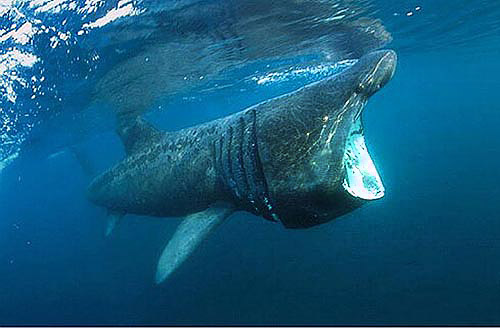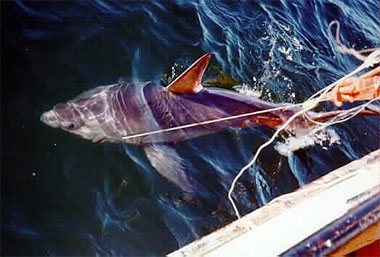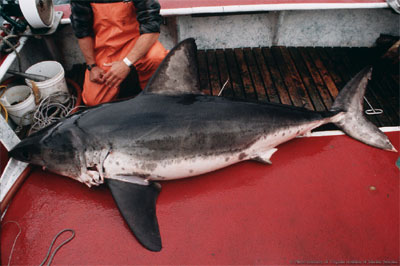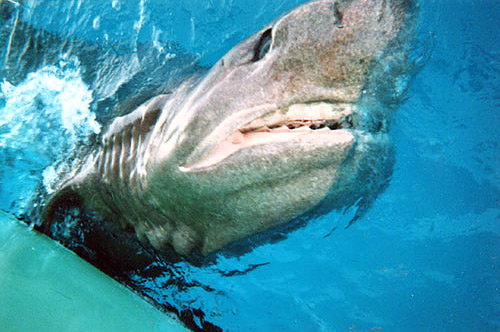As the year comes to a close, winter begins to cool the northern hemisphere, and we enter the holiday season (#fishmas). Even here in Florida, the air has turned “cold”, as evident by the iguanas falling out of trees. In honor of the season, we wanted to highlight the sharks that have mastered the cold, particularly those that inhabit the arctic.
As you may know, sharks are fish, and fish are normally cold-blooded (ectotherms). In other words, sharks are ectotherms, so their body temperature is dependent on the water around them. Ectothermic animals typically seek out warmer places to heat their bodies. If you’ve ever seen a lizard or a snake sitting in the sun for a while, they are basking. They use the sun’s heat to warm up their body for their day. We are warm-blooded mammals, endotherms, and are not dependent on a heat source because our bodies produce their own heat. So, if sharks are ectothermic, how could they survive in a place as cold as the arctic?
While most shark species are cold-blooded ectotherms, but there are also a handful of specialists that have broken the evolutionary mold. Some of these arctic sharks have evolved complex chemical reactions that protect them from the cold. Other sharks have behaviorally adapted to survive.

Endothermic sharks heat their bodies with vascular counter-current heat exchange. This works by using the heat generated from active swimming muscles and the shark’s metabolism to warm their body’s core and major organs. Deoxygenated blood flowing through veins is heated by the active muscles used for swimming. Located next to veins are the arteries that bring cold oxygenated blood from the gills, which are exposed to the cold water, to the muscles and organs. The veins’ heat is transferred to the arteries, allowing the shark to live comfortably in cold environments. Counter-current heat exchange is a shared trait in the Lamniform sharks, which includes the White shark (Carcharodon carcharias). Though this species has only been seen on the outermost edges of the arctic ocean, other sharks in this order are champions of the cold.
The Basking shark (Cetorhinus maximus) is the second largest extant (still living) shark/fish in the world. These giants filter feed on tiny plankton and venture into the arctic to feed on krill schools, which are tiny crustaceans. Though they only generate enough heat to be a couple degrees warmer than the surrounding water.

Porbeagles (Lamna nasus), on the other hand, can raise their body temperature 12.5o to 18oF (-10.8o to -7.8oC) above the surrounding water temperature. These sharks are fast swimmers and can grow to a maximum total length of 12 ft (365 cm) and a maximum weight of over 500 lbs (230 kg). They have only been involved in 2 unprovoked bites on humans, thought these interactions were likely just investigations rather than active predation. Humans don’t normally get in water that cold!
The king of the endothermic sharks is the Salmon shark (Lamna ditropis). The internal body temperatures of Salmon sharks have been recorded to reach up to 60.1°F (15.6°C), greater than sea surface temperature. Forget hot cocoa and a fire; I’m snuggling a salmon shark! Salmon sharks are generally believed to be one of the principal predators of Pacific salmon (Oncorhyncus spp.), but some studies suggest this may only be true for specific populations of Salmon sharks. In the Aleutian Islands and the Gulf of Alaska, Salmon shark abundance corresponds to catch rates of salmon and the migration patterns of predator and prey appear to be linked. However, in the Northwestern Pacific, most Salmon sharks appear to be concentrated south of the salmon’s migration path. The migration patterns of these Northwestern Pacific populations appear to be linked instead with those of herring (Clupea pallasii) and sardines (Sardinops sagax caerulea). I suppose we could call it “shark that eats lots of migrating fish”, but that name doesn’t roll off the tongue. I think it’s best to stick with Salmon sharks. Porbeagles and Salmon sharks are closely related and were once confused as the same species. We now know their ranges do not overlap. Salmon sharks are a Pacific species, and Porbeagles are an Atlantic species.

Moving away from the endothermic warm bodies of Lamniform sharks, two species of ectothermic shark in the genus Somniosus have evolved a unique method to combat the cold.
The Greenland Shark (Somniosus microcephalus) and the Pacific Sleeper shark (Somniosus pacificus) produce and store high concentrations of a chemical compound, urea, to protect its body from the cold. Urea, however, can harm the proteins in the shark’s body. To stabilize the proteins, these sharks have also evolved to produce high concentrations of another chemical, trimethylamine oxide (TMAO). This cocktail of chemicals, urea, and TMAO, is toxic to humans, but the people of Iceland ferment and dry the Greenland shark’s meat for several months to make traditional dishes, including Hákarl. The Greenland shark is an opportunistic feeder, whether scavenging something on the bottom. They’ve also been observed catching terrestrial animals too close to the edge, including seals, polar bears, and reindeer! These amazing sharks are believed to be some of the oldest living vertebrates, with high estimates saying they can live over 400 years. Less is known about the Pacific Sleeper Shark, I guess you could say we shark scientists have been… sleeping on the job.

Last, but not least, on our tour of Arctic sharks are only visitors, rather than residents. The Bluntnose Sixgill (Hexanchus griseus) is a 20ft visitor to the southern edges of the Arctic but remain in deep water. Along the descent, the temperature of arctic waters increases, so the bitter cold is much less of an issue for these sharks. Another visitor, the Spiny Dogfish (Squalus acanthias), spend their summer vacations in the Arctic. These sharks venture north in search of seasonal prey during the warmer months.
We hope you enjoyed this chilly visit with some cool sharks! Were you surprised that there are sharks in the Arctic? If you were a shark do you think you’d be endothermic, full of chemicals, or just hang out in the warmer places? Let us know on Facebook or Twitter!